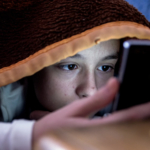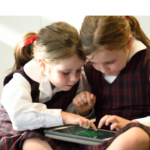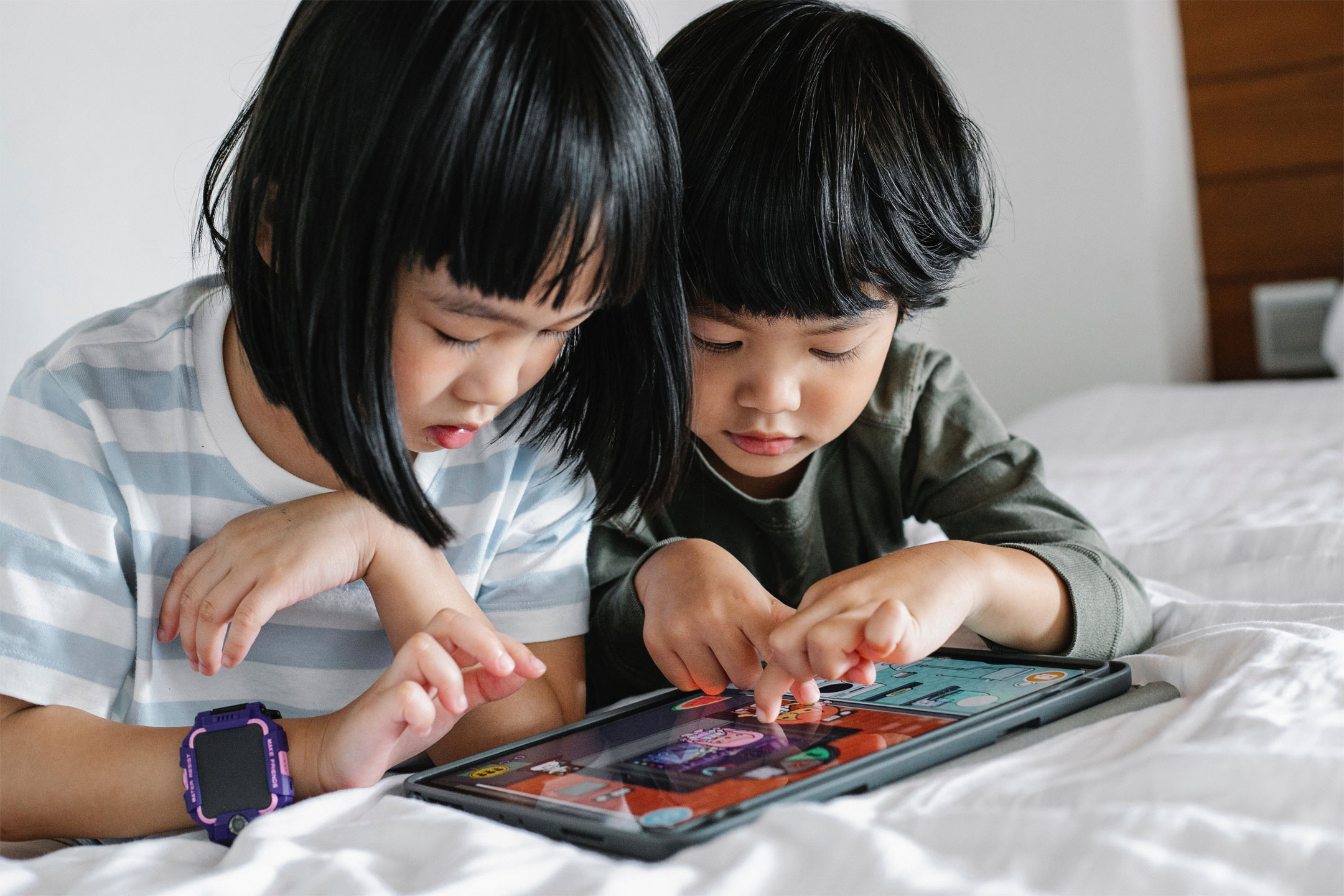
08 May New research shows digital technology is linked to reduced wellbeing in young kids.
What can parents do? Jacquelyn Harverson, Louise Paatsch and Sharon Horwood look at the links between digital technology use and young children’s well-being.
Once upon a time, children fought for control of the remote to the sole family television. Now, the choice of screen-based content available to kids seems endless. There are computers, tablets, phones and gaming consoles offering streaming services, online content and apps.
Children also use devices at school, with digital literacy part of the Australian curriculum from the start of school.
The speed and scale of this change have left parents, researchers and policymakers scrambling to catch up. And it has inevitably led to concerns about screen use, as well as guidelines about limiting their use.
Our new study examines the links between digital technology use and the well-being of young children, specifically those aged four to six.
Our comprehensive analysis shows that children who spend longer periods using digital technologies are more likely to have social, emotional and behavioural difficulties. However, we can’t say at what age or level of screen use these negative effects will likely become evident.
But for parents trying to navigate a world where technology is all around us, our study also shows that there are things they can do to help their kids use screens in healthier ways.
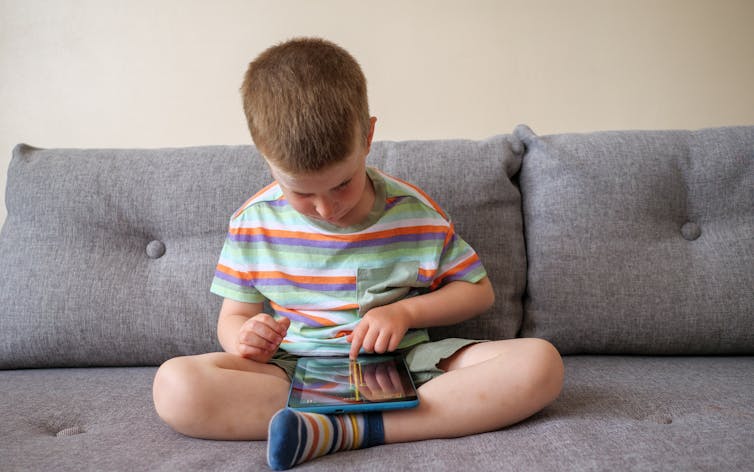
Our research
We carried out a systematic review of the research literature on children’s use of digital devices since 2011 (after the Apple iPad was launched). This means we examined all the available peer-reviewed research on digital devices and their impact on well-being for children.
We also focused on children aged four to six, as it is a time when children are developing rapidly and beginning school. Other studies have focused on particular types of devices. But we included all kinds of digital devices in our search—from televisions to phones, tablets and gaming consoles— to make sure we could provide a comprehensive analysis of what kids are using.
The studies came from 20 countries, including Australia, China, the United States, Turkey, Germany and Canada. They were almost exclusively based on parents’ reports of their children and included more than 83,000 parents.
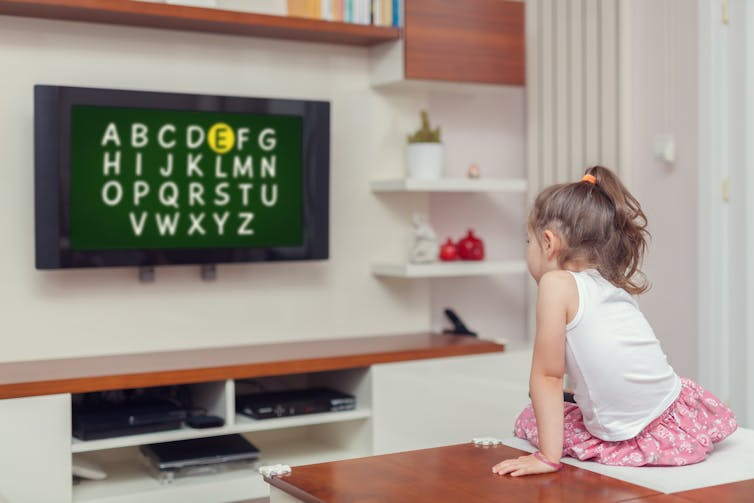
Morrowind/Shutterstock
4 areas of child wellbeing
From this, we analysed the relationship between children’s technology use and the following four areas:
- psychosocial well-being: an overall measure that captures children’s happiness, as well as social and emotional adjustment.
- social functioning: children’s social skills, including how well they get along with their peers.
- the parent-child relationship: the level of closeness or conflict between parents and their children.
- behavioural functioning: the absence of behavioural difficulties such as tech-related tantrums, hyperactivity, depression or anxiety.
We did this with a meta-analysis – a statistical method that uses data from multiple studies to draw conclusions.
What we found
Our analysis found that more digital technology use among young children was associated with poorer well-being outcomes across the four areas.
It is important to note that correlation doesn’t equal causation. The scope of the research means that at this point, it is impossible to identify the exact reasons behind the negative relationships.
But we do know the more time children spent watching TV, playing on iPads or apps, the more likely they were to have problems with behaviour, social skills, their relationship with their parents, and their emotional well-being.
But tech use is more than just time
Our research also brought together emerging evidence that shows the relationship between digital tech use and child well-being is complex.
This means the type of content children consume, and the context in which they consume it, can also have a bearing on their well-being. The research shows there are several ways parents can guide their children to potentially mitigate the negative links with social, emotional and behavioural wellbeing.
With this in mind, how can you encourage healthier screen use?
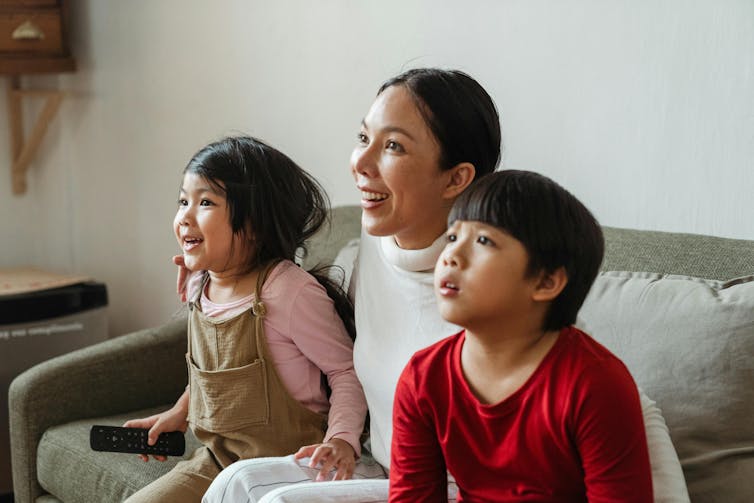
Ketut Subiyanto/Pexels, CC BY
3 tips for kids and screens
1. Keep an eye on the clock
The research cannot provide a specific “time limit” for screen use. But you can still be mindful of how much time your child spends on devices both at home and at school – moderation is key.
Try to mix screen time with other activities, such as time outside, time with friends and family, books, or imaginary play.
2. Seek out quality
Research shows encouraging high-quality educational content during screen use may curb negative links between tech use and well-being.
Consider swapping fast-paced cartoons and time spent on lots of short clips with educational viewing, for example, ABC kids programs that promote learning.
Introduce your child to age-appropriate educational and interactive games that challenge them and encourage them to be creative.
3. Use tech together
Tech time isn’t just for kids – parents can also join in.
Solo tech use may reduce opportunities for positive social interactions. But watching or playing with friends or family opens up opportunities for conversation, working together and learning.
This could include watching a movie together and talking about the characters, working on an online puzzle together or learning new coding skills together.![]()
Jacquelyn Harverson, PhD Candidate, School of Psychology, Deakin University; Louise Paatsch, Professor of Education, Deakin University, and Sharon Horwood, Senior Lecturer in Psychology, Deakin University
This article is republished from The Conversation under a Creative Commons license. Read the original article.



